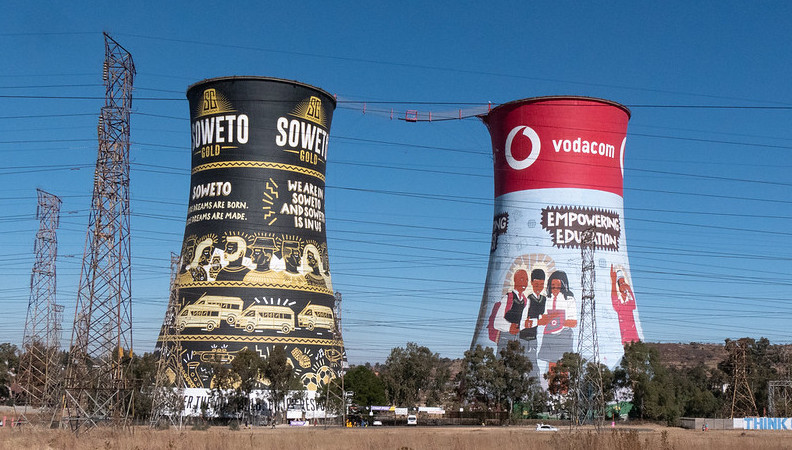Around 97% of the $8.5 billion package rich countries are offering South Africa to shift from coal to clean energy is set to be delivered as loans.
That can be seen in a summary of the financing provisions obtained by Climate Home News.
It shows that $4.6bn – 54% of the funding – is earmarked as concessional loans, with better borrowing terms than South Africa can access on the open market. Just under half of that money is provided by Germany and France.
The remaining $3.7bn, or 43%, include a mix of commercial loans and investment guarantees to de-risk projects so they attract private investors. These will come from the EU, US and the UK, which is contributing the largest share.
Only $230m will be delivered collectively by donor countries as grants – 2.7% of the total package.
South Africa’s cabinet approved an investment plan for the money on Wednesday, but has yet to publish it. A launch is expected at the Cop27 climate summit next month.
The South African government has been in negotiations with partner governments since striking an outline deal at the Cop26 climate summit in November 2021.
South Africa’s president Cyril Ramaphosa has repeatedly said his government would only accept a deal that offered good terms. Most of the money should come as grants, he said shortly after Cop26, and any loans should be at concessional rates.
Ramaphosa's government has been trying to reduce the country's sovereign debt, which stands at around 70% of GDP.
A distinctive feature of the package was its focus on supporting workers in the transition to clean energy, with social protection measures and retraining.
But under the breakdown seen by Climate Home, less than 1% of the money is earmarked for direct social investments. In contrast, 5% is to develop a green hydrogen sector.
Repurposing coal power stations
South Africa pitched for the funds so that debt-burdened state utility Eskom could repurpose coal-fired power stations. The funding is expected to support Eskom decommission three coal power plants and replace them with renewables.
The utility’s dire financial situation means it is unable to borrow money at market rates.
Through their development agencies, Germany and France are respectively providing $1.2bn and $1bn in concessional finance.
The largest share comes from the Climate Investment Funds’ (CIFs) Accelerating Coal Transition initiative.
With $500m of seed funding, the CIFs initiative is expected to leverage a further $2.1bn in both public and private finance, according to documents published last week. That includes an estimated $875m from the private sector, counted towards the $8.5bn total.
South Africa approves $8.5bn energy transition investment plan
By de-risking investments and reforming policies, partners aim to attract further investments from the private sector in renewable energy. Around 80% of the package is earmarked for the electricity sector.
The UK government, which led negotiations on the package with the EU, is providing the largest share of commercial loans and guarantees to unlock funding from the African Development Bank and the private sector, with a contribution totalling $1.7bn.
US contribution
The US is providing $1bn in funding through its Development Finance Corporation (DFC), whose terms are not preferential enough to be counted as concessional funding.
Jake Schmidt, of the US-based Natural Resources Defense Council, told Climate Home the US' relatively small contribution could be explained by the fact Washington has "historically less bilateral relations with South Africa than other contributing countries".
Schmidt added that donor countries need to mobilise more money to make a deal appealing to other coal-dependent emerging countries negotiating an energy transition partnership, including Indonesia and Vietnam.
"I hope they find a slightly better offer for other countries if they are going to move this forward. South Africa needs financing so desperately because Eskom is in so much debt. But others might not be so desperate."
